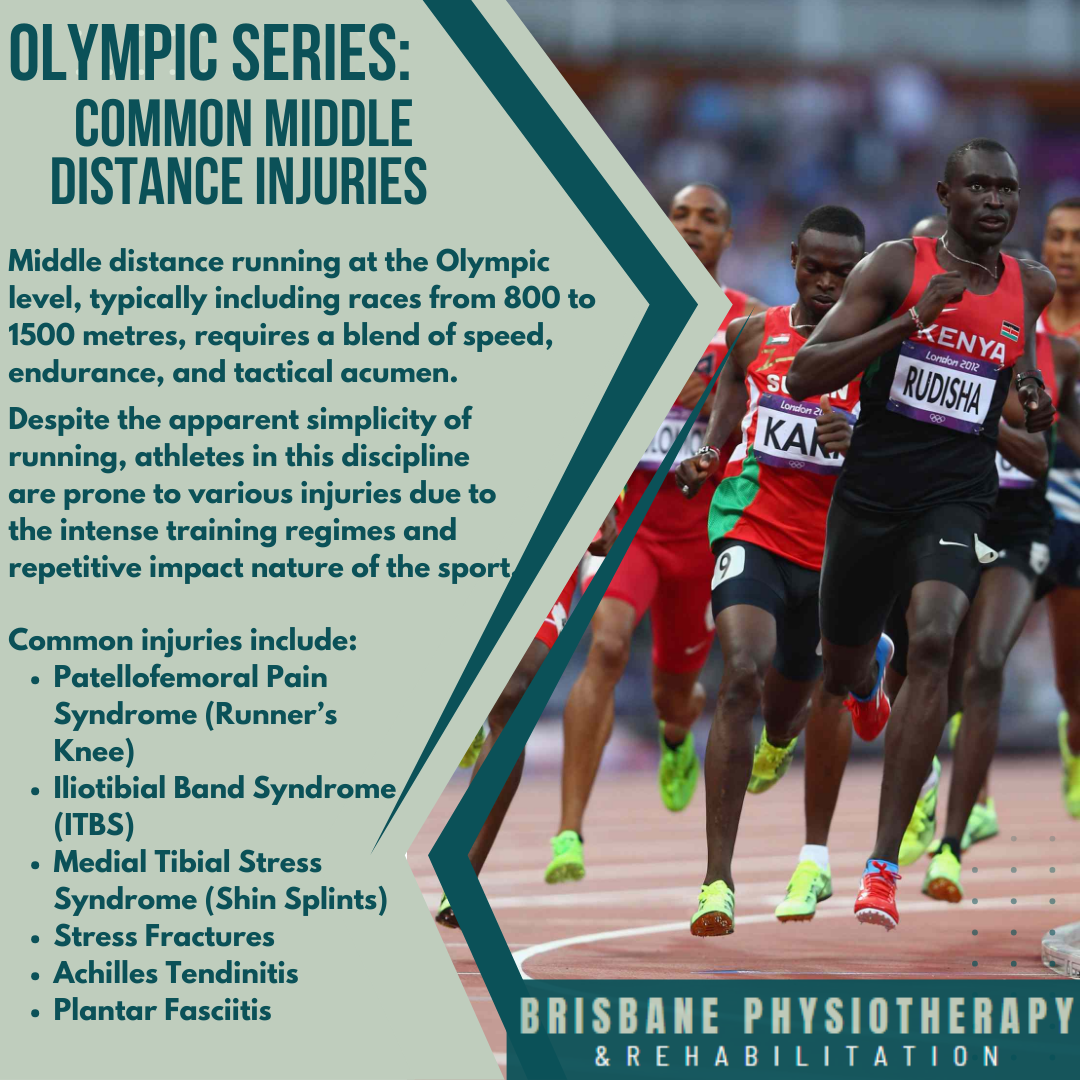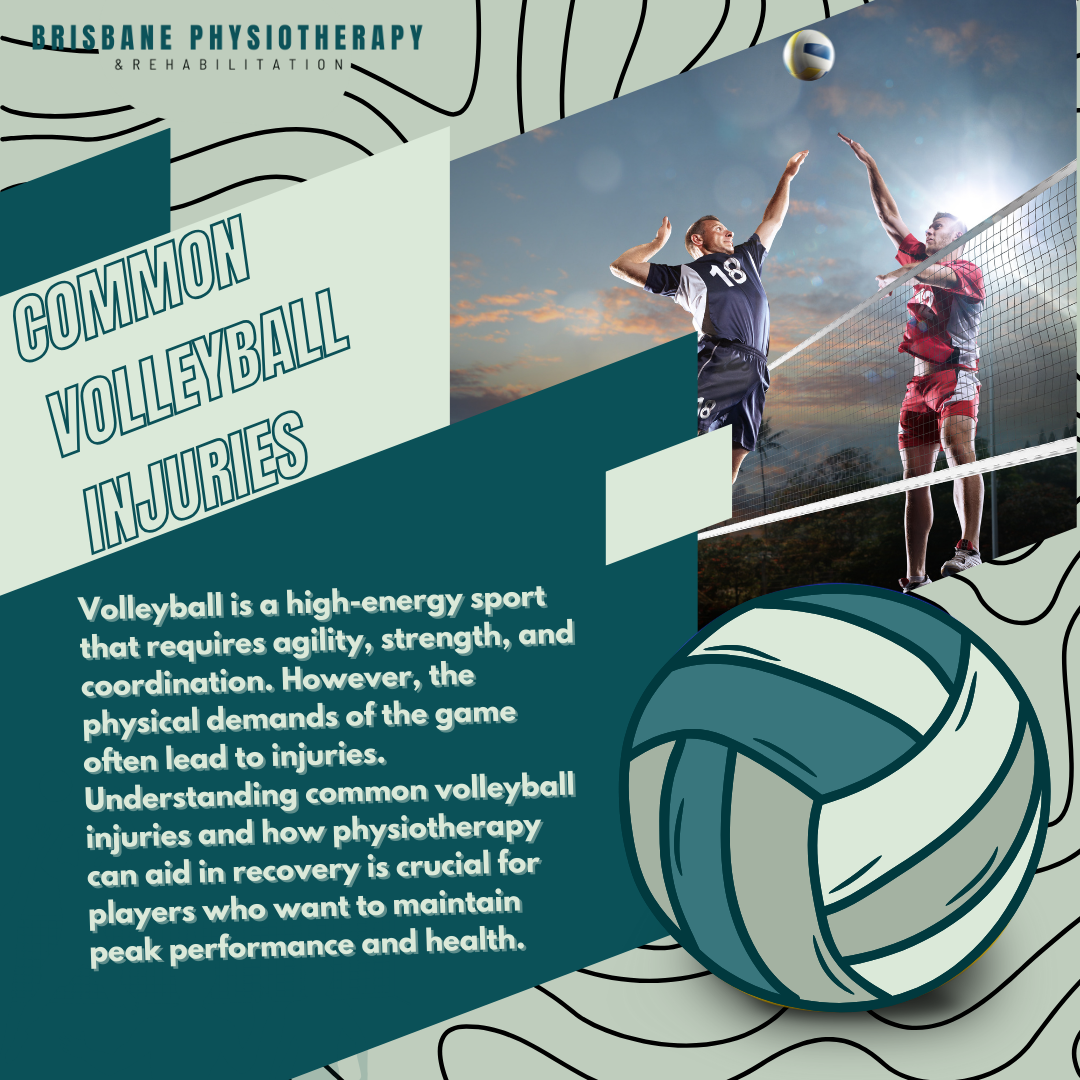News & Articles

Common Discus Injuries in Physiotherapy
Discus throwing is a track and field event where athletes compete to throw a heavy discus as far as possible. The sport requires athletes to develop strong rotational power and precise technique to achieve optimal distance.

Common Olympic Middle Distance Injuries seen in Physiotherapy
Middle distance running at the Olympic level, which typically includes races from 800 metres to 1500 metres, requires a blend of speed, endurance, and tactical acumen. Despite the apparent simplicity of running, athletes in this discipline are prone to various injuries due to the intense training regimes and repetitive nature of the sport. Understanding these injuries by body region is crucial for maintaining peak performance.

Common Volleyball Injuries and How Physiotherapy Can Help
Volleyball is a high-energy sport that requires agility, strength, and coordination. However, the physical demands of the game often lead to injuries. Understanding common volleyball injuries and how physiotherapy can aid in recovery is crucial for players who want to maintain peak performance and health.

Physiotherapy Guide to Common Hockey Injuries
Hockey is a thrilling and physically demanding sport that requires speed, agility, and strength. Whether on ice or field, hockey players are constantly at risk of injury due to the high-intensity nature of the game. Understanding the common injuries in hockey and how physiotherapy can aid in recovery is essential for players aiming to stay in top form and extend their careers.

Common Olympic Sprinting Injuries seen in Physiotherapy
Olympic short distance running demands peak physical condition and exceptional speed, yet it also comes with the risk of various injuries that can sideline athletes without proper care. Understanding these common injuries and how physiotherapists approach their treatment is crucial for athletes aiming to maintain optimal performance.

Canoe Slalom: Olympic Sport, Common Injuries, and Physiotherapy Treatment
Canoe slalom is an Olympic sport that involves navigating a decked canoe or kayak through a course of hanging gates on river rapids in the fastest time possible. It is a highly skilled and physically demanding sport that requires strength, endurance, agility, and precise control.

Common BMX Racing Injuries in Physiotherapy
BMX Racing is a high-speed, off-road bike racing sport that involves competitors racing on dirt tracks with jumps, tight turns, and obstacles. It was introduced to the Olympics at the Beijing 2008 Games.

Common Basketball Injuries in Physiotherapy
Basketball players are prone to a variety of injuries due to the high-intensity nature of the sport, which includes running, jumping, and quick directional changes. Common injuries include:

Common Olympic Wrestling Injuries Seen in Physiotherapy
Olympic wrestling demands exceptional physical prowess, technique, and resilience. While injuries may vary, wrestlers are susceptible to specific types of injuries across different body regions due to the sport's rigorous demands and dynamic nature. Understanding these injuries by body region is crucial for effective injury management and prevention.

Common Hurdling Injuries and their Physiotherapeutic Treatment
Hurdling is an exhilarating but demanding track and field event that requires a blend of speed, power, and agility. The combination of sprinting and leaping over hurdles at high speed makes athletes prone to specific injuries. Understanding these common injuries and the role of physiotherapy in treating them can help hurdlers recover effectively and return to their sport safely.
